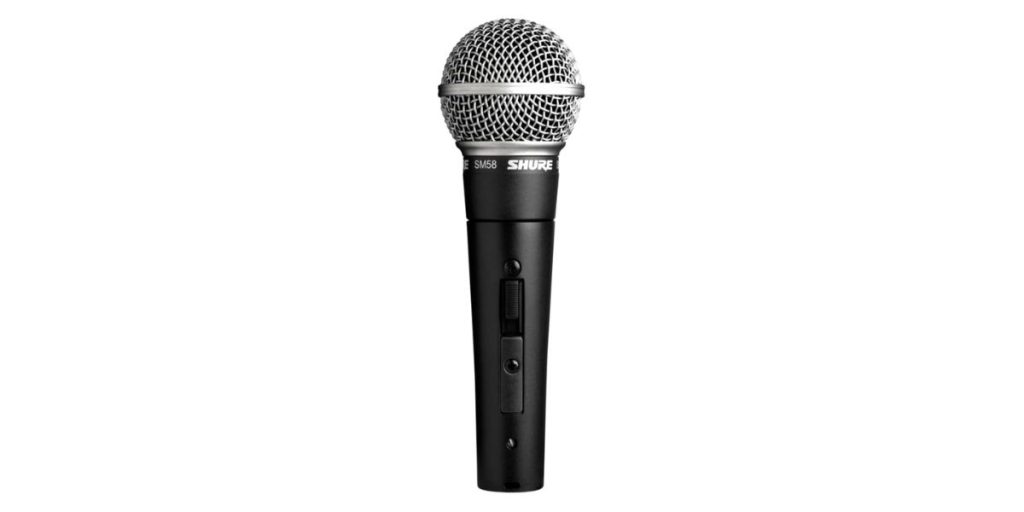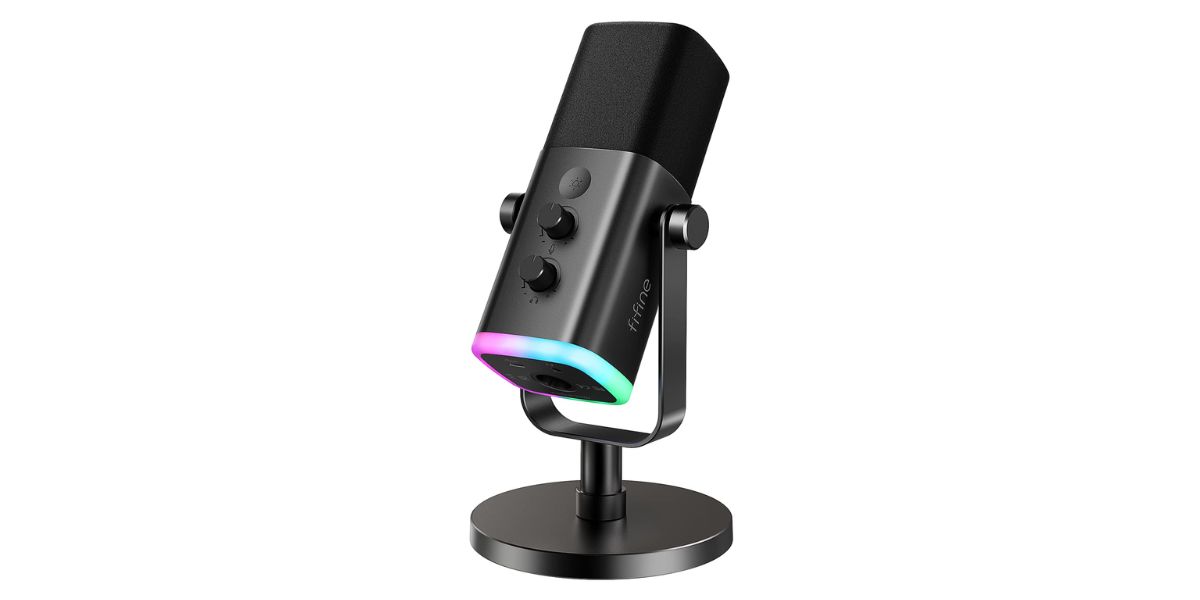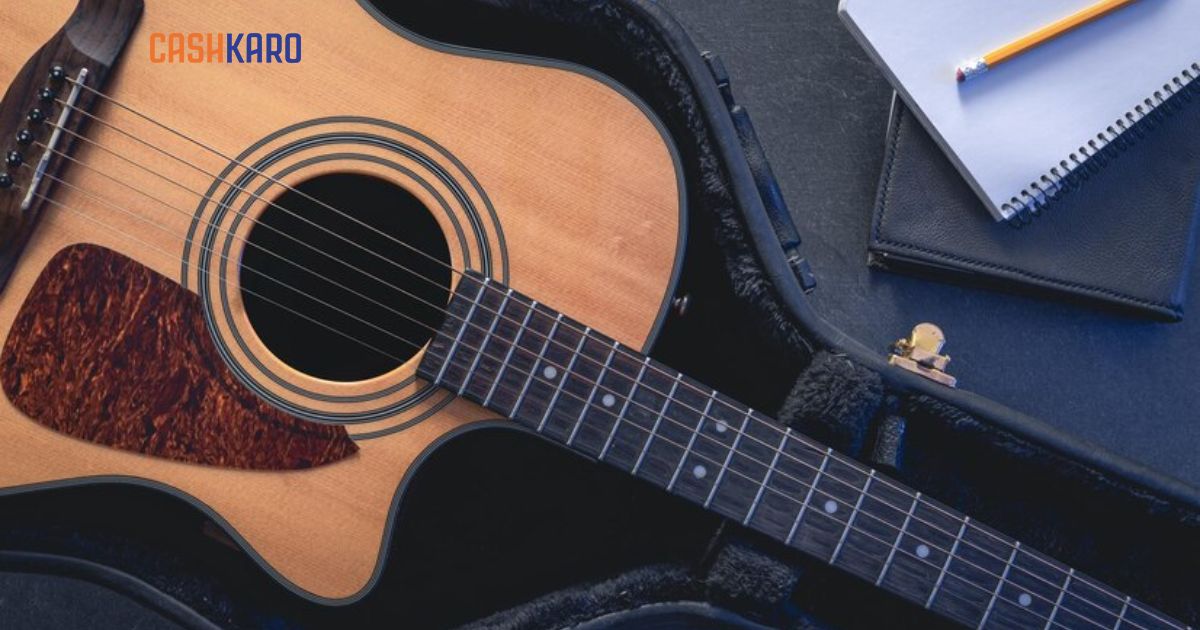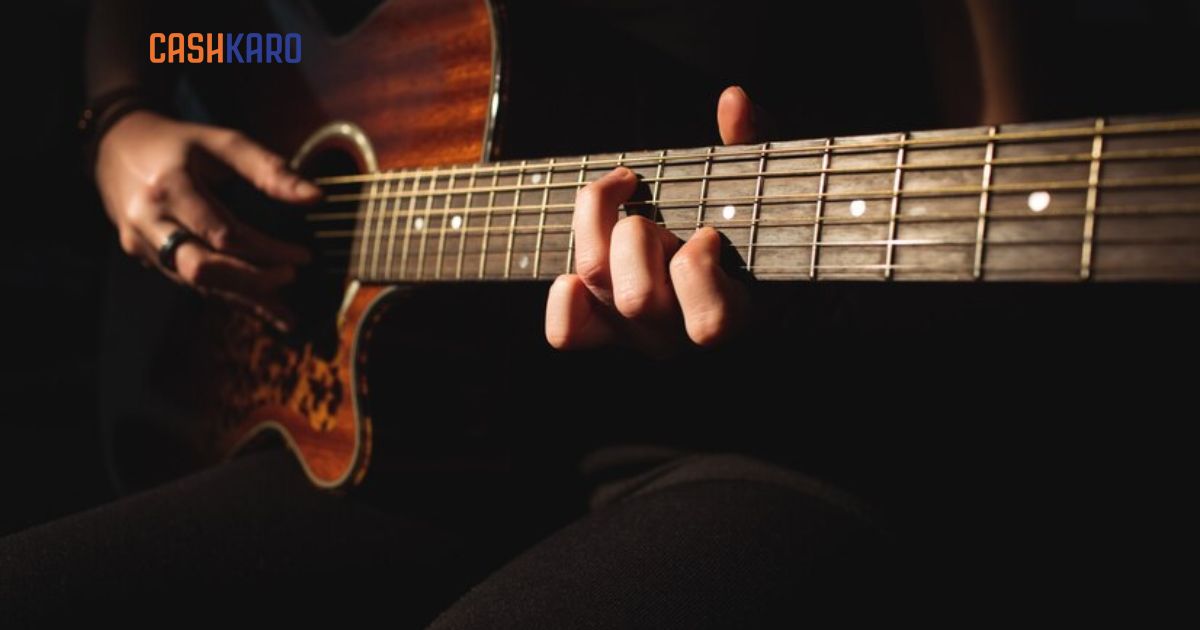Hey there, music lovers and audio enthusiasts!
Have you ever felt like your voice just doesn’t shine the way it should when you sing, record, or podcast? If so, choosing the right vocal microphone can make all the difference. It can capture every nuance, emotion, and detail of your sound, making you stand out like a pro. Whether you’re recording in a studio, podcasting from home, or performing live, the right microphone ensures your voice gets the spotlight it deserves.
But you’ve probably seen countless options, each promising to be the “best.” How do you figure out which one truly suits your needs? That’s where we come in! In this blog, we’ll share the best vocal microphones, tips for making the right choice, and even answer some questions you might have along the way. So, get ready and find your perfect match to make your sound unforgettable.
Top 10 Mics for Signing and Podcasting
Rode Nt1 5th Generation Condenser Microphone

Are you looking for a microphone that bridges the gap between traditional studio sound and cutting-edge technology? Meet the Rode NT1 5th Generation, a masterpiece blending the warmth of classic audio with next-gen features. Whether you’re a podcaster, musician, or content creator, this mic is engineered to bring studio-grade sound directly to your fingertips. With this mic, you don’t just record—you create magic.
What Makes Rode Nt1 5th Generation Stand Out?
- Dual Connectivity—The dual connect output allows seamless switching between XLR for studio setups and USB for plug-and-play convenience.
- Unmatched Recording Flexibility—Capture every detail with its 32-bit float digital output, ensuring zero clipping even during dynamic performances.
- Studio-Grade Processing—The Onboard DSP lets you add compression, a noise gate, and an APHEX Aural Exciter via RØDE Central software.
- Whisper-Quiet Operation—This microphone boasts the world’s lowest self-noise at 4dBA, ensuring your recordings are clean and professional.
- Rugged Build—It is constructed with high-grade aluminium and a military-grade ceramic coating for durability and long-lasting use.
| Pros | Cons |
| Versatile usage | Premium price point may not suit beginners |
| Minimises external vibrations | |
| High-pass filter | |
| Smooth frequency response | |
| All-in-one recording solution |
Best For:
- Studio recording of vocals, guitars, and drums.
- Podcasters and content creators who are seeking professional-quality audio in a home setup.
Shure SM7B Cardioid Vocal Dynamic Microphone

The Shure SM7B isn’t just a microphone; it’s an audio legend. From Grammy-winning studios to top-rated podcasts, this mic has earned its place as a go-to for creators who demand unmatched clarity and reliability. Designed to capture every detail of your voice while filtering out distractions, the SM7B transforms your recordings into a professional masterpiece. Whether you’re singing, speaking, or storytelling, it is one of the best vocal microphones in India.
What Makes Shure SM7B Cardioid Stand Out?
- Wide-Range Frequency Response—The flat wide-range frequency response helps it deliver clean, natural reproduction for both music and speech.
- Boost Controls—With bass roll-off and presence boost control settings, it minimises low-frequency noise and enhances mid-range clarity.
- Advanced Shielding—The SM7B’s advanced shielding blocks interference from monitors, neon lights, and other devices, giving you clean and uninterrupted recordings.
- Air Suspension Shock Isolation—This system isolates the microphone from mechanical vibrations, eliminating noise caused by handling, desk movement, or other physical disruptions.
- Detachable Windscreen—The included A7WS windscreen is specifically designed for close-up recording. It softens plosive sounds (“p” and “b” sounds) and adds a warmer tone.
| Pros | Cons |
| Reliable design | Requires a preamp with high gain for optimal performance |
| Durable build | Expensive choice |
| Consistent performance | |
| Superior sound quality | |
| Customisable tone controls |
Best For:
- Podcasters and broadcasters who want smooth sound and built-in shielding for professional recording.
- Vocalists and instrumentalists seeking a warm, natural tone.
JBL Commercial CSHM10 Handheld Microphone

Now, walk into a conference room or step up for a recording session confidently with a JBL CSHM10 microphone. Its super-cardioid capsule ensures your voice remains front and centre, while the rugged design means you’ll never have to worry about it giving out mid-session. Also, its lightweight yet rugged design and advanced sound-capturing capabilities make it deliver quality sound with precision.
What Makes JBL Commercial CSHM10 Stand Out?
- Wide Frequency Range—Whether you’re capturing deep, resonant tones or higher frequencies, the CSHM10’s broad frequency range, between 80-15,000 Hz, delivers a natural and balanced sound.
- Durable Steel Body—Built to last, the rugged body of the microphone ensures it can withstand daily usage, whether you’re constantly on the move or using it in busy environments.
- Steel Wire Mesh Cap—It comes with a sturdy steel wire mesh cap that not only protects the microphone’s capsule from damage but also shields it from wind and plosive sounds.
- On/Off Switch—The noiseless on/off switch allows you to take control without disrupting your flow. You can mute quickly during a live session if needed.
- 124 dB Max SPL—This microphone can handle high sound pressure levels with ease and capture loud instruments or vocals without distortion, making it suitable for both soft-spoken narrations and energetic performances.
| Pros | Cons |
| Lightweight design | Limited high-frequency response compared to premium microphones |
| Professional XLR connector | |
| Crystal-clear audio | |
| Portable design | |
| Quality construction |
Best For:
- YouTubers and podcasters looking for simple yet effective audio solutions.
- Presentations and meetings where clarity and ease of use are crucial.
- Recording narration and dubbing with minimal background noise.
FIFINE XLR/USB Dynamic Vocal Microphone

With the FIFINE AmpliGame AM8, you don’t just sound great—you look great doing it. This dynamic microphone is built for versatility and style. Whether you’re streaming, podcasting, recording music, or gaming, it blends professional-grade sound with gamer-friendly aesthetics like RGB lighting. It also delivers pristine sound quality and is one of the best vocal microphones to buy.
What Makes FIFINE XLR/USB Dynamic Mic Stand Out?
- Dual Connectivity—Enjoy the best of both worlds with XLR connectivity for studio-level recordings and USB for quick, plug-and-play setups.
- Natural Audio Clarity—This microphone operates within a frequency range of 50Hz–16kHz to deliver balanced audio with smooth mids, bright highs, and stable bass. It captures your voice naturally, whether for streaming or recording.
- Cardioid Polar Pattern—Its directional cardioid polar pattern focuses on your voice while rejecting off-axis noise. This ensures that your recordings are clear, even in less-than-ideal environments.
- Tap-to-Mute Button—Have complete control of your recording during live sessions with a tap-to-mute button. It also features a handy LED light to remind you of your microphone’s status.
- Customisable RGB Lighting—Add a splash of colour to your setup with more than 10 RGB light options and 3 modes. The memory function saves your preferred settings for uninterrupted style.
| Pros | Cons |
| Volume control knob | XLR cable not included |
| Noise-cancelling windscreen | RGB and mute functions are USB-only |
| Built-in threads | |
| Smooth gain adjustment | |
| Real-time monitoring through headphones |
Best For:
- Streamers and gamers who want both great sound and a stylish setup with RGB lights.
- All level users, whether beginners or advanced users.
Zoook Karaoke Wired Singing Microphone

Karaoke Nights just got an upgrade with the Zoook Karaoke Wired Microphone. Designed to add fun and professionalism to every setting, this mic combines a sleek, lightweight design with powerful sound capabilities. Whether you’re belting out your favourite songs at home, hosting a lively party, or delivering an inspiring speech, it ensures your voice takes centre stage. With Zoook, every word and note resonates perfectly!
What Makes Zoook Karaoke Singing Mic Stand Out?
- Dynamic Cardioid Capsule—It uses a cardioid polar pattern, which focuses on capturing sound directly in front of it while rejecting unwanted background noise to deliver clear and crisp audio.
- Long XLR Cable—With a generous cable length of 3 meters, you can move around freely during performances without feeling tethered to one spot.
- Wide Compatibility—Equipped with an XLR-to-1/4″ connector, this mic works seamlessly with various devices, including Bluetooth speakers, TVs, mixers, and KTV audio systems.
- Built-in Pop Filter—The integrated pop filter minimises harsh plosive sounds (like “p” and “b”), ensuring smoother and more professional vocal output without the need for extra accessories.
- On/Off Switch—This simple yet practical feature allows you to mute the mic when not in use, saving energy and preventing unwanted noise during breaks.
| Pros | Cons |
| Perfect for versatile use | Plastic body may not suit heavy-duty professional use |
| Excellent noise rejection | |
| Lightweight and portable | |
| Superior construction | |
| High sound quality |
Best For:
- Home karaoke nights or casual parties.
- Speeches at meetings, conferences, or outdoor gatherings.
- Kids or beginners who want an easy-to-use and durable mic.
FIFINE K6 Dynamic Vocal Microphone

This is another of the best mics for singing that can add power and precision to your karaoke nights and performances. Engineered for crystal-clear sound and reliability, the FIFINE K6 dynamic vocal mic is designed for professionals and enthusiasts alike. Its rugged metal build and user-friendly design make it the perfect choice for dynamic, on-the-go use. Whether it’s a lively party, a heartfelt speech, or a solo stage performance, it delivers impeccable audio clarity to make your voice stand out.
What Makes FIFINE K6 Dynamic Vocal Mic Stand Out?
- Rugged Metal Construction—Built with a robust metal body, the microphone can withstand frequent handling and rough use, ensuring durability for various settings.
- On/Off Switch—This switch is easily accessible and convenient for live sessions. It allows you to mute or unmute seamlessly during your performance.
- Easy-to-Use—Plug-and-play compatibility with a 1/4-inch input jack allows you to connect this mic directly to amplifiers, mixers, or karaoke machines.
- Unidirectional Audio—The cardioid pattern efficiently captures sound directly in front of the mic while rejecting ambient noise from other directions, perfect for crowded or noisy environments.
- PVC-Protected Cable—This mic comes with a long (14.8 feet) cable that is protected by a durable PVC coating, ensuring better sound transmission and resistance to wear and tear.
| Pros | Cons |
| High sound pressure | Not compatible with small speakers under 15 watts |
| Ergonomic design | |
| Lightweight Yet sturdy | |
| No power requirement | |
| Built-in pop filter |
Best For:
- Karaoke lovers for fun, interactive singing sessions.
- Musicians and performers for amplifying vocals and acoustic instruments.
Shure SM58S Dynamic Vocal Microphone

Some microphones become legends—and the Shure SM58S is one of them. Known for its excellent performance, it has been the trusted choice of vocalists, podcasters, DJs, and presenters for decades. It comes with a built-in pop filter, noise rejection, and a convenient on/off switch, it makes every word and note shine. Whether you’re commanding a stadium, rocking a small stage, or recording in a studio, the SM58S ensures your voice takes centre stage—clear, powerful, and unforgettable.
What Makes Shure SM58S Dynamic Mic Stand Out?
- Break-Resistant Stand—This mic includes a 180-degree rotatable stand adapter, ensuring stability and easy positioning during performances or recordings.
- Rugged Construction—Crafted with a steel mesh grille and enamel-coated metal body to withstand wear and tear, this microphone is perfect for regular touring and on-stage use.
- Bass Roll-Off Feature—This functionality reduces low-frequency rumble and unwanted noise, ensuring that only the best parts of your vocals are captured.
- High Sound Pressure—It can handle loud sound sources without distortion, which makes it ideal for vocalists with powerful voices and live performances.
- Legendary Sound Quality—Specifically designed to enhance vocals, it delivers a warm, crisp sound and optimises it with a brightened midrange for lead and backing vocals.
| Pros | Cons |
| On/off switch | Lacks advanced features like multiple polar patterns |
| Built-in spherical wind | |
| 50Hz–15kHz frequency response | |
| Uniform cardioid polar pattern | |
| Versatile applications |
Best For:
- Professional vocalists who want a mic for live performances and studio recordings.
- Presenters and DJs at clubs, conferences, and events requiring robust vocal clarity.
Sennheiser E835-S Dynamic Vocal Microphone

Step into the spotlight with the Sennheiser E835-S, a microphone built to amplify your performance, not your challenges. Designed for vocalists, presenters, and performers, this dynamic cardioid mic ensures your voice commands attention, whether you’re on stage or in the studio. Its robust metal construction, precise sound reproduction, and dependable feedback rejection make it the perfect partner for those who demand consistency and clarity in every note or word.
What Makes Sennheiser E835-S Stand Out?
- Clear and Even Tonality—This mic delivers natural sound reproduction with minimal proximity effect, ensuring balanced audio for vocals and spoken word applications.
- High Sound Pressure Levels—It projects and cuts through high stage volumes, making it perfect for loud environments or dynamic vocal performances.
- Durable Construction—Built with a rugged metal housing, this microphone is engineered to withstand the rigours of live performances and frequent handling.
- Versatile Connectivity—Equipped with an XLR connector, the E835-S integrates seamlessly with mixing consoles, audio interfaces, and PA systems and adapts to a variety of setups.
- Consistent Sound Quality—It maintains uniform sound reproduction even when moving off-axis or varying distances from the mic capsule. This makes it one of the best mics for singing.
| Pros | Cons |
| Silent on/off switch | Does not include cable |
| Minimal distortion | Not a budget-friendly choice |
| Cardioid pickup pattern | |
| Excellent feedback rejection | |
| Highly Dynamic |
Best For:
- Singers who need clear and powerful projection on stage.
- Semi-professional studios for recording vocals and acoustic instruments
Maono PD200X USB/XLR Dynamic Singing Mic

Meet the Maono PD200X, a microphone designed for creators who demand versatility, precision, and style. With programmable RGB lighting, a custom dynamic capsule, and seamless integration via Maono-Link software, it isn’t just a microphone—it’s your creative partner, tailored to match your needs and aesthetic. From recording a podcast to streaming a gaming session to laying down vocals in your home studio, this mic delivers professional-grade sound with ease.
What Makes Maono PD200X USB/XLR Stand Out?
- Dual-Mode Output—This mic offers the flexibility to connect directly via USB for plug-and-play simplicity or through XLR for a professional studio setup, ensuring compatibility with any recording environment.
- Custom Dynamic Capsule—It can capture a broad frequency range (40Hz–16kHz) with deep lows, crisp highs, and balanced mids. The pattern also isolates your voice, rejecting background noise for clear, focused recordings.
- Integrated Smart Knob—With a 2-in-1 smart knob, you can adjust mic gain or headphone volume and use the one-click mute key with LED indicators for quick control.
- RGB Lighting—You can switch between 9 colours or dynamic gradients to create a personalised gaming or streaming atmosphere. You can also turn it off with a 2-second press to enjoy distraction-free recording.
- Maono-Link Compatibility—Unlock advanced audio controls with Maono-Link software, including EQ settings, a limiter, compressor adjustments, and RGB customisation.
| Pros | Cons |
| Metal construction | RGB and software features are USB-only |
| Wide compatibility | No built-in pop filter |
| Ultra-high SPL handling | |
| Plug-and-play convenience | |
| Zero-latency monitoring |
Best For:
- Podcasters for detailed and focused audio capture in a home studio or professional setup.
- YouTube, Twitch, or any platform content creation where quality and aesthetics matter.
TONOR Dynamic Karaoke Microphone

Bring your performances to life with the TONOR Dynamic Karaoke Microphone, one of the best vocal microphones. Designed with a durable metal body, a 15ft XLR-to-1/4” cable, and a cardioid pickup pattern, this mic delivers clear, focused vocals while minimising background noise. Whether you’re singing at a wedding, speaking at an event, or enjoying a karaoke night, this microphone ensures your voice is heard with precision and clarity.
What Makes TONOR Dynamic Karaoke Mic Stand Out?
- Long Cable—It comes with a 15ft XLR-to-1/4” cable that allows flexibility and freedom of movement during performances. Its superior construction minimises electromagnetic interference, delivering clear and reliable sound transmission.
- All-Metal Construction—Built with a durable hard-metal body, the microphone is resistant to impact, ensuring it can handle the rigours of frequent use.
- Foam Mic Cover—This mic includes a foam windscreen that reduces plosive sounds and wind interference, ensuring smoother and more professional audio output.
- Optimised Frequency Response—With a response between 80Hz and 12kHz, it delivers balanced sound across frequencies, capturing both depth and clarity.
- Complete Starter Kit—The package includes everything you need to get started: a microphone, XLR cable, foam cover, and instruction manual.
| Pros | Cons |
| Simple on/off switch | Not ideal for high-end studio recordings |
| Good build quality | |
| Energy-saving design | |
| Value for money | |
| Highly versatile mic |
Best For:
- Karaoke enthusiasts for fun, energetic singing sessions at home or parties.
- Events like weddings, speeches, and stage performances.
How to Choose the Best Vocal Microphone?
Here’s a step-by-step guide that will help you find the best mic for singing or podcasting:
Understand Your Purpose
Are you recording music, hosting a podcast, or streaming? What will you use this mic for the most?
Your purpose determines whether you need a dynamic or condenser mic. If you want to record music in a studio, condenser microphones are a good choice for their sensitivity and detail. However, for performing live, dynamic microphones are great because of their durability and ability to handle loud environments well. USB microphones, on the other hand, are easy to set up and great for casual use like podcasting or streaming.
Consider the Environment
Where will you use the mic?
Think about the environment where you are going to use the microphone most—quiet spaces or noisy events. If you’re working in a home studio, condenser mics shine in. For live performances, dynamic mics are the go-to choice because they can handle noise and movement.
Check Features and Build Quality
Look for features that suit your needs. Noise reduction or pop filters are needed for clear audio, while adjustable stands are great for convenience. If you want long-term usage, go for sturdy build quality.
Remember—a well-built microphone can last years, so invest wisely.
Read Reviews and Test If Possible
Go through user reviews or test the microphone before buying, if you can. Hearing how it captures sound can give you confidence in your decision. This will help you know whether it will make your voice sound like you want to.
Pro Tips for Maximising Your Microphone’s Performance
Investing in the best vocal microphone is just the start. To truly make your recordings shine, you need to keep in mind the tips you have been given. These tips will help you get the best out of your mic and take your audio game to the next level:
- Use a pop filter to reduce plosive sounds that can distort your recordings. This will ensure that your vocals remain clean and professional.
- Maintain a distance of 6-12 inches from the microphone, depending on the type and purpose. You can experiment with different distances to find what works best for your voice.
- Background noise can ruin even the best microphones. Record in a quiet, acoustically treated space. Use foam panels or blankets to minimise echo and ambient noise.
- Use the right accessories, such as a sturdy stand to prevent vibrations, a shock mount to reduce handling noise, and a windscreen for outdoor recordings or to reduce breath noise.
- Dust and dirt can affect your mic’s performance over time. Clean your microphone regularly with a soft cloth and store it in a case when not in use.
Final Thoughts
Choosing the right vocal microphone is more than just a technical decision—it’s about finding the perfect partner for your voice. From understanding your needs and budget to optimising performance with pro tips, we hope this guide has made your decision easier and more fun. Remember, your voice is unique, and the right microphone will help it stand out, capturing every nuance and emotion.
Now that you’ve explored some of the best vocal microphones and key tips, which one are you leaning toward? Let us know in the comments or reach out—we’d love to help you make the best choice!
FAQs
Which mic is best for vocals?
The Shure SM58S is widely regarded as the best microphone for vocals due to its legendary sound quality, durable build, and tailored frequency response.
What mic do singers use?
Singers often use condenser microphones for studio recordings due to their sensitivity and clarity. For live performances, dynamic microphones are popular as they are durable and can handle loud environments.
What is the best volume for vocals?
The ideal vocal recording volume is around -12dB to -6dB to ensure clarity and avoid distortion. You can adjust levels during post-production without losing audio quality.
What’s the difference between a dynamic and a condenser microphone?
Dynamic microphones are durable, handle loud sounds, and are great for live performances. Condenser microphones, on the other hand, are sensitive, capture detailed audio, and are ideal for studio recordings.
Do I need an audio interface for my microphone?
If you’re using an XLR microphone, you’ll need an audio interface to connect it to your computer or recording setup. However, USB microphones don’t require one and can plug directly into your device.














